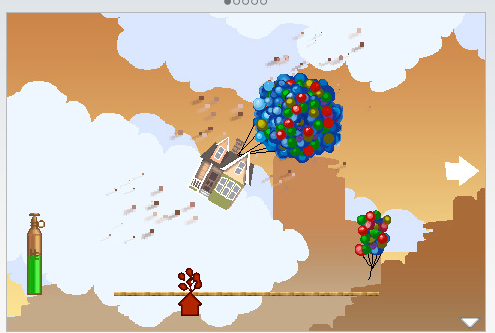Preparing for the release of “Harry Potter and the Half-Blood Prince,” Warner Bros. played plenty marketing cards new and old: theatrical and TV trailers, websites, videogames and even YouTube.
Then, the week before the movie opened, it added a twist: a Harry Potter iPhone application. The free app lets fans access videos, posters and character information, as well as insert photos of themselves into the fictional newspaper “The Daily Prophet.”
 Clearly the studios have taken notice: iPhone and iTouch apps are becoming increasingly popular, with more than 50,000 already available in the year-old Apple store — totalling 1.5 billion downloads. But while most apps are there to make money, studios see them as part of another rapidly expanding industry — interactive marketing.
Clearly the studios have taken notice: iPhone and iTouch apps are becoming increasingly popular, with more than 50,000 already available in the year-old Apple store — totalling 1.5 billion downloads. But while most apps are there to make money, studios see them as part of another rapidly expanding industry — interactive marketing.
“Everyone is trying to figure out what is the best way to bring in consumers without being overt in marketing,” said Trish Halamandaris, vice president of Worldwide Marketing and Mobile Publishing for Disney Interactive Studios. “The phone is an extremely compelling device. It’s personalized. It’s with you 24-7. It’s really viral. If you see something really cool, odds are you’re going to tell your friend.”
Warners has been in the game from the start. Its “The Dark Knight” app, which launched shortly after Apple’s app store last summer, allowed fans to “Jokerize” pictures of the faces to resemble the Heath Ledger villain.
But this summer the studios have come aboard in a big way. Disney, which says it will be releasing an app for every new movie, created an “Up” game where players use balloons to move through the air, guiding the main character’s house over obstacles and collecting badges. (See accompanying story, "Meet the Apps.)
Warners launched multiple apps for “Terminator Salvation” — a graphic novel (pictured below) and two versions of a game that gives users a choice of weapons to use in fighting any one of 11 enemies. 
“Apps allow us to reach consumers in a mobile platform,” said Amy Powell, Senior Vice President of Interactive Marketing at Paramount, whose “Star Trek” app let users do battle with phaser weapons. “You are no longer forcing fans to come to our websites. We are saying we want you to interact with our brand and our movie wherever you are.”
Apple won’t release download figures, but “Fast & Furious,” which came out April 2, remains number 13 on Apple’s Top 25 list three months later. Unlike many of the free movie-based apps, “Fast & Furious” comes at a price — initially it was $5.99, but that has since dropped to $1.99. Disney’s “Up” has a “launch special”: 99 cents.
Each app offers the consumer a different experience as studios tailor them both to the movie and the expected audience. One specialized example is Univeral’s "Bruno" app, which allows users to "Bruno-ize" pictures of themselves and includes a "Touch Bruno" feature, where hitting his "sweet spot" rewards you with dirty talk.
Still, the most common form used by studios continues to be the “advergame” — a videogame built especially for the smartphone.
Studios historically have released console games in conjunction with movies. But those games can take years to make and millions of dollars to create and distribute, which meant studios often licensed other companies to make games based on their movies.
Apps, on the other hand, can be developed quickly and relatively cheaply. Thus, studios can produce less expensive and properly timed companions for their tentpoles.
“It’s allowing things that were never feasible before,” said Seth Gerson, CEO of Last Legion Games, which helped make “Watchmen: Justice Is Coming” for Warners. “All of a sudden you can create a [massive multiplayer online game] that before would’ve cost millions and taken years.”
“Watchmen” is an online role-playing game that allows users to create their own character inside the film’s universe. Like all of the apps, it’s purchased digitally, reducing the cost even more for studios. “There’s no inventory risk, so studios can invest a little bit of money — and the rewards are fantastic,” Gerson told TheWrap.
While the majority of existing movie-related apps are games, studios and gaming companies both see an opportunity to push the marketing aspect of the apps even further. With the iPhone, there is the potential to link apps with social media like Twitter and Facebook.
"Fast and the Furious" is one app that has already moved in this direction as players can upload their top times to YouTube and post challenges to other players.
“For the studio it’s a new world,” Gerson said. “You can take the social features of the phone and enable a game to work within the different social graphs. And what can be done on the phone is only getting more interesting.”
Though the iPhone is just one of many platforms available, up to now it’s been the focus of most studio apps. The number of iPhone owners continues to grow, and recent studies indicate that the phone’s users are more active than users of other smartphones.
According to Nielsen, iPhone users are six times as likely to watch video, four times more likely to use the internet and five times as likely to download apps than other smart phone users.
This activity makes iPhone users the ideal candidates for marketing campaigns.
“I just read a report," Gerson said. "People who have laptops and iPhones are leaving their laptop in the office."




